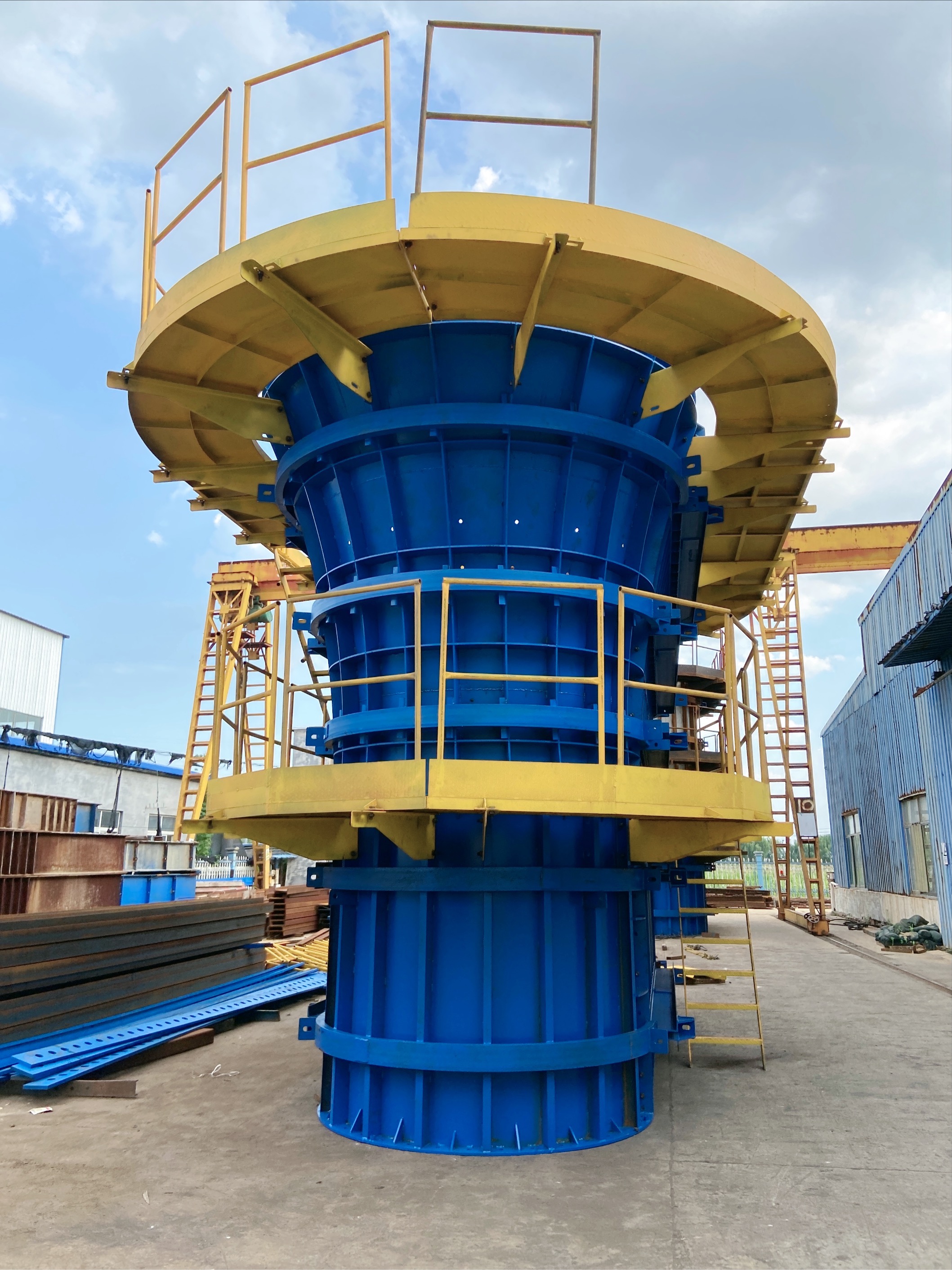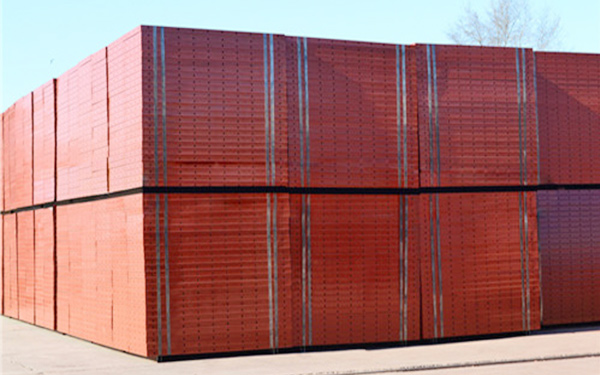Current position:
Home
News home
Industry News
Manufacturers of composite steel formwork: How to evaluate the corrosion rate of the formwork?
Manufacturers of composite steel formwork: How to evaluate the corrosion rate of the formwork?
source:Shandong Tianhong Heavy Industry Co., Ltd
Abstract:
Evaluating the corrosion rate of templates requires the use of multidimensional detection methods, combined with quantitative analysis and environmental monitoring. The specific process is as follows:
1、 Basic quantitative detection methods
Weight method
Weight loss method: measure mass loss after removing corrosion products, suitable for scenarios where corrosion products are prone to detachment
Formula:
V
=
W
0
−
W
one
S
⋅
T
V=S ⋅ TW0 − W1 (unit: g/(m ² · h))
Weight gain method: retaining the weight of corrosion products for use in dense oxide film scenarios
Depth indicator conversion
Convert quality loss into thickness loss by combining density (ρ)
Formula:
D
=
V
×
eight point seven six
ρ
D=ρ V × 8.76 (unit: mm/a)
Example: Carbon steel (ρ=7.85g/cm ³) has a mass loss of 1g/m ² · h, corresponding to an annual corrosion depth of 0.11mm4
2、 Electrochemical rapid assessment
Applicable scenarios for core parameters of the method
Polarization curve method for corrosion current density
i
c
o
r
r
i
corr
Research on the Corrosion Mechanism of Laboratory Media
Electrochemical Impedance Spectroscopy (EIS) Charge Transfer Resistance
R
c
t
R
ct
Coating/plating failure analysis
Linear polarization method polarization resistance
R
p
R
p
On site rapid detection (error ± 15%)
3、 Special testing for localized corrosion
Pitting evaluation
Chemical soaking method: Soak in ferric chloride solution (50g/L FeCl ∝· 6H ₂ O) at 35 ℃ for 24 hours
Evaluation criteria: maximum pit depth/density
Critical pitting temperature (CPT): The maximum temperature at which a material can withstand pitting corrosion is determined by a potential jump
Stress Corrosion Testing
Constant load method: Apply a continuous load of 80% yield strength
Medium selection: 42% MgCl ₂ boiling solution (155 ℃)
4、 Coupling analysis of environmental parameters
Corrosion factor monitoring
Influence mechanism of parameter sensor type
For every 100ppm increase in chloride ion concentration and ion selective electrode, the corrosion rate of stainless steel increases by 35%
Electrochemical corrosion significantly intensifies when relative humidity capacitive sensor RH>60%
Accelerated Test Simulation
Cyclic corrosion test: including three-stage cycles of salt spray (5% NaCl), drying (40 ℃/30% RH), and wetting (98% RH)
High temperature and high-pressure reactor test: simulating the working conditions of oil and gas pipelines (150 ℃/10MPa H ₂ S environment)
5、 Engineering Application Standards
Data criteria
Uniform corrosion: graded according to GB/T 15957-2025 (Grade I<0.01mm/a, Grade IV>0.5mm/a)
Localized corrosion: Comparison of pitting corrosion grade maps specified in ASTM G46-2024
Report elements
Required data: initial/termination weight, exposed area, time, environmental parameters (T/RH/Cl ⁻)
Corrosion morphology description: SEM micrograph+energy dispersive spectroscopy (EDS) analysis
By combining multiple methods for verification (such as weight method+electrochemical+microscopic analysis), it can be ensured that the corrosion rate assessment error is controlled within ± 8%
Weight method
Weight loss method: measure mass loss after removing corrosion products, suitable for scenarios where corrosion products are prone to detachment
Formula:
V
=
W
0
−
W
one
S
⋅
T
V=S ⋅ TW0 − W1 (unit: g/(m ² · h))
Weight gain method: retaining the weight of corrosion products for use in dense oxide film scenarios
Depth indicator conversion
Convert quality loss into thickness loss by combining density (ρ)
Formula:
D
=
V
×
eight point seven six
ρ
D=ρ V × 8.76 (unit: mm/a)
Example: Carbon steel (ρ=7.85g/cm ³) has a mass loss of 1g/m ² · h, corresponding to an annual corrosion depth of 0.11mm4
2、 Electrochemical rapid assessment
Applicable scenarios for core parameters of the method
Polarization curve method for corrosion current density
i
c
o
r
r
i
corr
Research on the Corrosion Mechanism of Laboratory Media
Electrochemical Impedance Spectroscopy (EIS) Charge Transfer Resistance
R
c
t
R
ct
Coating/plating failure analysis
Linear polarization method polarization resistance
R
p
R
p
On site rapid detection (error ± 15%)
3、 Special testing for localized corrosion
Pitting evaluation
Chemical soaking method: Soak in ferric chloride solution (50g/L FeCl ∝· 6H ₂ O) at 35 ℃ for 24 hours
Evaluation criteria: maximum pit depth/density
Critical pitting temperature (CPT): The maximum temperature at which a material can withstand pitting corrosion is determined by a potential jump
Stress Corrosion Testing
Constant load method: Apply a continuous load of 80% yield strength
Medium selection: 42% MgCl ₂ boiling solution (155 ℃)
4、 Coupling analysis of environmental parameters
Corrosion factor monitoring
Influence mechanism of parameter sensor type
For every 100ppm increase in chloride ion concentration and ion selective electrode, the corrosion rate of stainless steel increases by 35%
Electrochemical corrosion significantly intensifies when relative humidity capacitive sensor RH>60%
Accelerated Test Simulation
Cyclic corrosion test: including three-stage cycles of salt spray (5% NaCl), drying (40 ℃/30% RH), and wetting (98% RH)
High temperature and high-pressure reactor test: simulating the working conditions of oil and gas pipelines (150 ℃/10MPa H ₂ S environment)
5、 Engineering Application Standards
Data criteria
Uniform corrosion: graded according to GB/T 15957-2025 (Grade I<0.01mm/a, Grade IV>0.5mm/a)
Localized corrosion: Comparison of pitting corrosion grade maps specified in ASTM G46-2024
Report elements
Required data: initial/termination weight, exposed area, time, environmental parameters (T/RH/Cl ⁻)
Corrosion morphology description: SEM micrograph+energy dispersive spectroscopy (EDS) analysis
By combining multiple methods for verification (such as weight method+electrochemical+microscopic analysis), it can be ensured that the corrosion rate assessment error is controlled within ± 8%
Disclaimer: The content provided on this website is for reference only (some information is sourced from the internet). The publication of content information is for the purpose of transmission and does not represent the views of this website. If the content involves copyright issues, please contact the website editor in a timely manner, and we will take appropriate measures to avoid unnecessary losses for both parties.
Related article
- Composite steel formwork manufacturer: What are the advantages and disadvantages of steel formwork compared to wooden formwork and aluminum formwork?
- Pulling out Mountains and Rivers for Win Win - Jining Tianli Employees Celebrate National Day Holiday with Tug of War Competition
- Supplier of steel formwork rental station: How to deal with and prevent leakage of slurry in steel formwork?
- Large scale steel formwork manufacturers: What are the advantages and disadvantages of galvanizing treatment for steel formwork?
- Supply from nearby steel formwork manufacturers: How to extend the service life of formwork in highly corrosive environments?
- Composite bridge steel formwork processing manufacturer: How to check the dimensional accuracy after steel formwork correction?
- Composite steel formwork rental: What buildings are steel formwork mainly used in?
- Customization of Steel Template Specifications: What are the Common Types of Defects in Steel Templates?
- List of rental prices for steel formwork: Key points for acceptance of bridge formwork after delivery to the construction site
- Customization of steel formwork specifications: What are the installation steps for steel formwork? 双语对照 笔记
- Rental price of steel formwork: Analysis of key points for concrete construction of bridge special-shaped column formwork
- Steel formwork manufacturer supply specifications: What are the applicable fields for steel formwork
Hot article

- T梁模版
- Pulling out Mountains and Rivers for Win Win - Jining Tianli Employees Celebrate National Day Holiday with Tug of War Competition
- 力“拔”山兮,“河”作共赢——济宁天力员工欢度国庆假期之拔河比赛
- Pulling out Mountains and Rivers for Win Win - Jining Tianli Employees Celebrate National Day Holiday with Tug of War Competition
- Pulling out Mountains and Rivers for Win Win - Jining Tianli Employees Celebrate National Day Holiday with Tug of War Competition
- Pulling out Mountains and Rivers for Win Win - Jining Tianli Employees Celebrate National Day Holiday with Tug of War Competition
- Pulling out Mountains and Rivers for Win Win - Jining Tianli Employees Celebrate National Day Holiday with Tug of War Competition
Recommended article

Customized rental of construction steel formwork: How to prevent and deal with loose joints in steel formwork?

Customized rental of steel formwork: What are the dimensions, specifications, and models of steel formwork?
- Customized rental of construction steel formwork: How to prevent and deal with loose joints in steel formwork?
- Customized rental of steel formwork: What are the dimensions, specifications, and models of steel formwork?
- Steel formwork manufacturer supply specifications: What are the applicable fields for steel formwork
- 力“拔”山兮,“河”作共赢——济宁天力员工欢度国庆假期之拔河比赛
- Pulling out Mountains and Rivers for Win Win - Jining Tianli Employees Celebrate National Day Holiday with Tug of War Competition
- Pulling out Mountains and Rivers for Win Win - Jining Tianli Employees Celebrate National Day Holiday with Tug of War Competition
- Pulling out Mountains and Rivers for Win Win - Jining Tianli Employees Celebrate National Day Holiday with Tug of War Competition
- Pulling out Mountains and Rivers for Win Win - Jining Tianli Employees Celebrate National Day Holiday with Tug of War Competition



